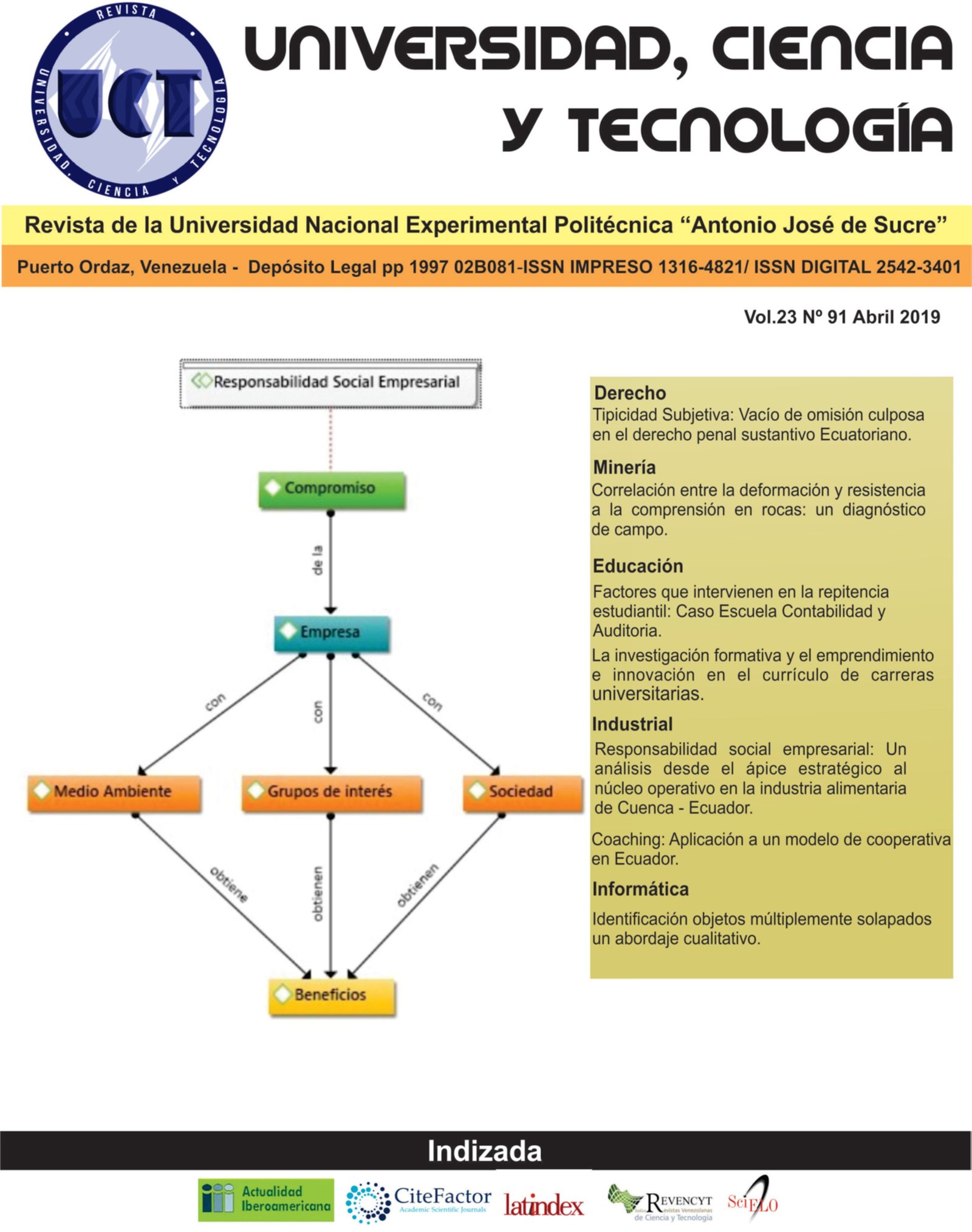Abstract
This research describes the factors that influence the repetition of teachers. The study was conducted at the School of Accounting and Auditing of the Faculty of Business Administration of the Polytechnic School of Chimborazo, in the period October 2017 - March 2018. For the evaluation of the factors related to students, a sample was selected of 87 students, equivalent to twenty-nine percent of the total population that failed at least one subject in this period. To collect the information, the survey was used as an instrument, the students who were failed in the study period were taken as a population. The inductive-deductive methods and field research and bibliographic documentation techniques were applied, at an exploratory, descriptive and analytical level. It was determined that the factors that predispose to student abandonment are social, economic and academic. It is suggested actions to reduce repetition and thereby avoid early dropout at the School of Accounting and Auditing, as well as follow up students who enroll in the coming years and who present the aforementioned risk factors to prevent them from dropping out of their studies.
Keywords: Higher education, students, repetition, economic factors, social factors and economic factors.
[1] Asamblea Constituyente de la República del Ecuador. (2008). Constitución de la República del Ecuador. Quito.
[2] C. Carrera. “Estudio comparativo de la eficiencia académica entre el curso propedéutico anterior al 2012-B y el curso de nivelación del sistema nacional de nivelación y admisión SNNA, en la Escuela Politécnica Nacional en el período 2011-2014”, Quito. 2017
[3] Consejo Politécnico. "Reglamento de la Unidad de Admisión y Nivelación", Riobamba, 2016.
[4] R. Gallegos. “Tercera ola de transformación de la Educación Superior en Ecuador”, Quito, 2013
[5] T. Schultz. “Investment in Human Capital”. (diciembre de 2018) The American Economic Review. [Online] Available: http://www.jstor.org/stable/1818907 [Last access: 2019].
[6] P. Viera “Los que triunfan y los que fracasan. Desigualdades sociales, logros educativos y emociones: el ingreso a la universidad pública en el Ecuador de las oportunidades”, Tesis de maestría, Quito, 2017.
[7] J. Tulcán and A. López. “Factores Que Inciden En La Tasa De Deserción Y Repitencia De La Carrera De Nutrición Y Salud Comunitaria De La Universidad Técnica Del Norte En El Periodo 2009- 2017”. Ibarra. 2017
[8] R. Ríos, R. Peña and M. Aguilar. “Factores predisponentes de abandono temprano en discentes de Medicina”, Guatemala, 2016.
[9] R. Ríos. “Factores De Riesgo Para Repitencia En La Unidad Didáctica De Física”, Guatemala, 2016.
[10] E. Vielka “Estudio Sobre La Deserción Y Repitencia En La Educación Superior En Panamá”, Panamá. 2005.
[11] P. Criales and M. Ojeda. “Factores Asociados A La Repitencia Estudiantil En La Facultad De Cultura Física Deporte Y Recreación De La Universidad Santo Tomás – Bogotá Entre Los Periodos De Tiempo De 2010 A 2013-1”, 2013
[12] L. Jiménez. “Reflexiones teóricas del fenómeno de repitencia, prolongación, abandono y deserción de discentes universitarios”, Costa Rica, 2016.

